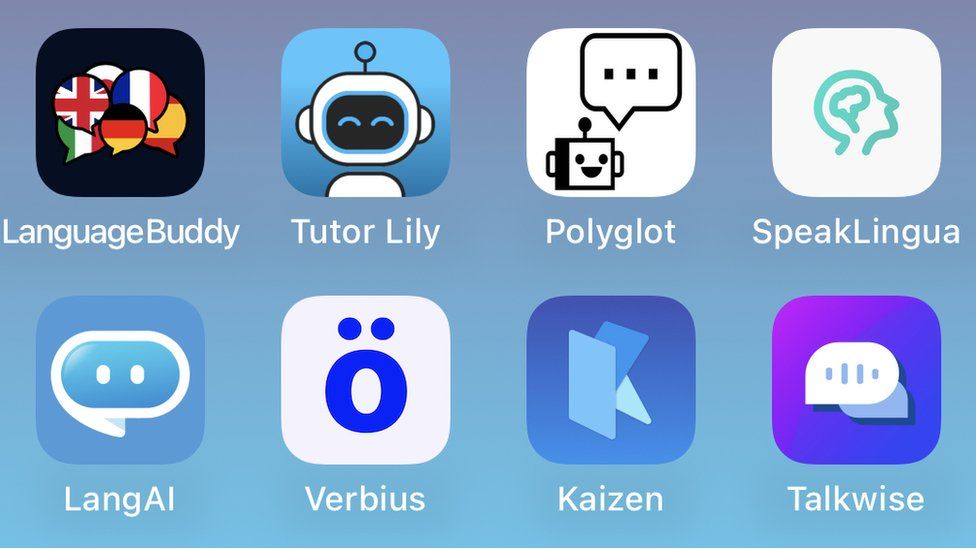Students switch to AI to learn languages

I tell my Argentinian pal that I’ve been using ChatGPT to practise my Spanish and, excitedly, I explain what it can do.
It can correct my errors, I tell him, and it’s able to give me regional variations in Spanish, including Mexican Spanish, Argentinian Spanish and, amusingly, Spanglish.
And, unlike when I’m chatting to him on WhatsApp, I don’t have to factor in time zone differences.
My friend is less enthused. “So you’ve replaced me?” he jokes.
I haven’t, of course. The convenience and breadth of an AI chatbot can’t compete with the pleasures of chatting with someone whose personality quirks I’ve learned over the course of years. It is however a useful supplement.
And I’m just one of many people who have discovered in recent months the benefits of AI-based chat for language learning.
A Costa Rican who works in the construction industry tells me that his AI-powered keyboard has been useful for polishing up his technical vocabulary in English. For instance, it’s saved him a great deal of time to be able to find an English word for a tool by describing it.
A South African café owner has gone further in improving his Spanish grammar with the aid of AI. He had a hard time finding simple study tools, especially given his ADHD, so he started using ChatGPT to quickly generate and adapt study aids like charts of verb tenses.
Developers have been quick to jump on this wave of interest, and there are now numerous apps that have drawn on open-source code to customise AI for language learners. These can be more appropriate for learners than general chatbots like the virtual companion Replika.
Blanka Klímová, an associate professor of applied linguistics at the University of Hradec Králové in Czechia, says that Replika has been useful for her students to practise informal English.
But the conversations could become repetitive, language corrections were missing, and the chatbot would sometimes ask students for sexy pictures. “This was quite abusive.”


In contrast, one of the specific language-learning chatbots is LangAI, launched in March by Federico Ruiz Cassarino. Mr Ruiz Cassarino drew on his own experiences of learning English after moving from Uruguay to the UK. His English skills improved dramatically from speaking every day, compared to more academic methods. He’s now using his own app to work on his Italian.
Many people get self-conscious about making mistakes in a language they barely speak, even to a tutor, Mr Ruiz Cassarino notes. But a chatbot won’t judge you. And the new wave of generative AI is so advanced that it can cultivate AI penpals, which is how he sees his product.
Rather than sticking to boring pre-scripted roleplays, with current AI “you can speak about things that are interesting to you, which makes it feel like not as much of a chore to learn”.
While many language learners are using popular chatbots like ChatGPT and Bard to practice, Mr Ruiz Cassarino believes that specific language-acquisition apps like his are useful.
“We worked really hard to make this well tailored for somebody who wants to learn languages,” he says. The team customised LangAI’s user interface to match users’ vocabulary levels, added the ability to make corrections during a conversation, and enabled the conversion of speech to text.
According to Mr Ruiz Cassarino, they’re seeing some impressive retention numbers for an education app. Of users who try the app for around 10 minutes, roughly 45% will still be using it a month later. They’re now focused on building the subscriber base of people willing to pay for unlimited use.
Related to that, they’re planning advancements like tracking of improved skills and the ability to personalise the chatbot’s tone and personality (perhaps even to practise a language while conversing with historical figures).

Assoc Prof Klímová, who is also a member of the research project Language in the Human-Machine Era, has assessed the useability and usefulness of AI chatbots for students of foreign languages. This research suggests that AI chatbots are helpful for vocabulary development, grammar and other language skills, especially when they offer corrective feedback.
To stay ahead of the trend, well-established language-learning apps have been integrating AI into their own platforms. Duolingo began collaborating with OpenAI in September 2022, using that company’s GPT-4.
It seems unlikely that AI chatbots will replace Duolingo altogether. Joy Ehonwa, an editor and writer in Lagos, mainly uses Duolingo to learn French.
But lately she’s also been using an AI chatbot developed in Nigeria to help with her French.
She interacts with this chatbot, Kainene vos Savant, the way she would with “an all-knowing human friend”.
Ms Ehonwa explains, “My questions revolve around ‘why’? When I fail an exercise on Duolingo, the app is not great at helping me understand why the thing that was wrong, was wrong. So, I ask Kainene. Also, when I think a sentence should be a certain way and it isn’t, I ask Kainene why and she helps me understand why it cannot be the way I expect it to be, as an English speaker.”

If the older language-learning platforms have weaknesses, so does AI-powered language learning. Users are reporting that chatbots are well versed in widely spoken European languages, but quality degrades for languages that are underrepresented online or that have different writing systems. Many of the AI language-learning apps are available for a limited set of languages.
Even in common languages, the chatbots make errors – sometimes even inventing words. One problem is that they deliver text so confidently, it would be easy for a relatively new learner to take what they say as correct.
Emily M Bender, a professor of computational linguistics at the University of Washington in the US, has concerns, “What kind of biases and inappropriate ways of talking about other people might they be learning from the chatbot?” Other ethical issues, such as data privacy, may also be neglected.


Still, Assoc Prof Klímová believes that there will be an enormous market for such technologies. And like a number of language learners, she points out that GPT-4, available with a paid subscription to ChatGPT, has made astonishing strides on accuracy.
Though many teachers disagree, she believes, “It’s just a matter of time when artificial intelligence will replace us as teachers of foreign languages.”
While that may sound extreme, “teachers will still have an important role as mentors and facilitators, particularly with beginner learners and older people since teachers have a strong understanding of the individual learning styles, language needs, and goals of each student.”
It will be key for language teachers to assess the added value of AI and their role in relation to it, as more sophisticated self-directed learning becomes possible. As Assoc Prof Klímová advises, “Technology is here to stay, and we have to face it and reconsider our teaching methods and assessments.”
